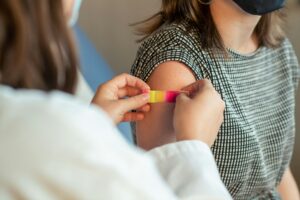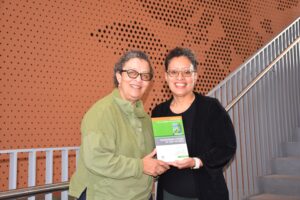
A groundbreaking method has significantly enhanced single-cell genetic sequencing, allowing scientists to rapidly and cost-effectively analyze the genomes of individual cells and viral particles in the environment. This advancement, detailed in a recent study published in Nature Microbiology, was pioneered by researchers from Bigelow Laboratory for Ocean Sciences and Atrandi Biosciences. They introduced “environmental microcompartment genomics,” demonstrating its efficacy in sequencing the microbiome of surface seawater from the Gulf of Maine.
In the study, the researchers showcased the method’s superiority over traditional techniques, particularly in studying the diverse and complex marine virus ecosystem. “This work demonstrates how we can increase the throughput of single particle genomics, increasing not just the quantity but also the quality of the data,” said Alaina Weinheimer, a postdoctoral fellow and lead author of the paper. “You can study your whole microbe community in this comprehensive manner that has not been possible — at reduced cost without sacrificing quality.”
Advancements in Genetic Sequencing
The traditional method, refined by Bigelow Laboratory’s Single Cell Genomics Center, involves sorting individual particles in a sample into wells on a microplate, processing 384 particles in one run. The new approach, however, increases throughput by an order of magnitude. Researchers obtained genomic sequences from over 2,000 particles in just 300 nanoliters of seawater, a volume less than a millionth of a liter.
Microcompartment genomics utilizes recent advances in microfluidic technology, compartmentalizing samples into thousands of tiny, semipermeable bubbles. Each bubble contains a trillionth of a liter of water, and single cells or particles are randomly sampled into individual compartments. Reagents amplify the DNA, which is then tagged with a unique barcode. Once the bubbles dissolve and the material is combined for sequencing, the barcode helps stitch together corresponding sequences into a complete genome.
Implications for Environmental Studies
Though initially applied to seawater, Weinheimer noted that early tests indicate the process is also effective on sediment and soil samples, which are often challenging to study with methods that struggle to differentiate cells from non-biological particles. Unlike standard single-cell sequencing methods that use flow cytometry, this approach does not require size-based pre-sorting, enabling the sequencing of particles of any size.
“This approach omits any size selection, so we can process everything from large microbes to the tiniest of viruses, or even free-floating DNA, simultaneously,” Weinheimer explained. “You’re looking at the microbial community in a very holistic way.”
Unveiling the Mysteries of Marine Viruses
“Nature’s microbial world remains full of mysteries, due to its extreme biodiversity and the small physical scales that make it hard to study,” added Ramunas Stepanauskas, director of SCGC and senior author of the study. “Environmental microcompartment genomics creates completely new opportunities for the study of that world.”
This rapid, size-agnostic approach is particularly valuable for studying viruses, which constitute the majority of oceanic microbes but vary widely in size, often being too small to isolate with a flow cytometer. The study highlighted the new method’s advantages over existing single-cell and metagenomic methods.
“The microcompartment approach generated some unique insights. For example, methods using flow cytometry appeared to pick up more large viruses, whereas the new approach captured viruses of all sizes present in the sample.”
The microcompartment approach provided more complete and higher quality genome sequences than widely used metagenomic methods. The scientists discovered that many viral genomes identified using the new approach belonged to the Naomiviridae family, recently cultured and possessing an unusual DNA structure that other methods might exclude.
“This group of viruses was the most abundant in our dataset, and we found evidence that it may infect the most abundant bacteria in the ocean, but we would have missed it entirely with other methods,” Weinheimer stated. “We’re showing that there’s a lot that can still be discovered about the viral community that’s currently invisible to us that we’re starting to unlock with these new methods.”
Future Prospects and Funding
The research was supported by the National Science Foundation, Simons Foundation, and the Research Council of Lithuania. Co-authors included scientists from Vilnius University and Atrandi Biosciences in Lithuania, alongside several Bigelow Laboratory researchers such as Brian Thompson, Julia Brown, Jacob Munson-McGee, Greg Gavelis, Corianna Mascena, and Nicole Poulton.
As the scientific community continues to explore the potential applications of environmental microcompartment genomics, this method could pave the way for new discoveries in microbial ecology and beyond, offering a more comprehensive understanding of the microscopic world that surrounds us.







